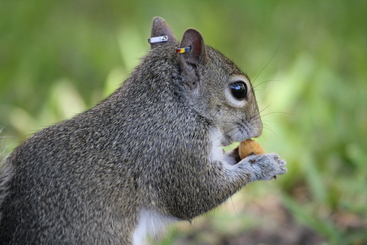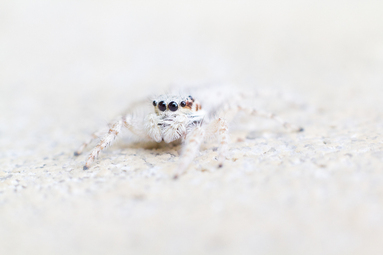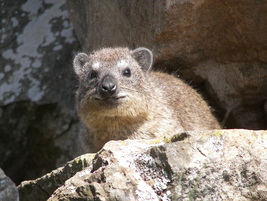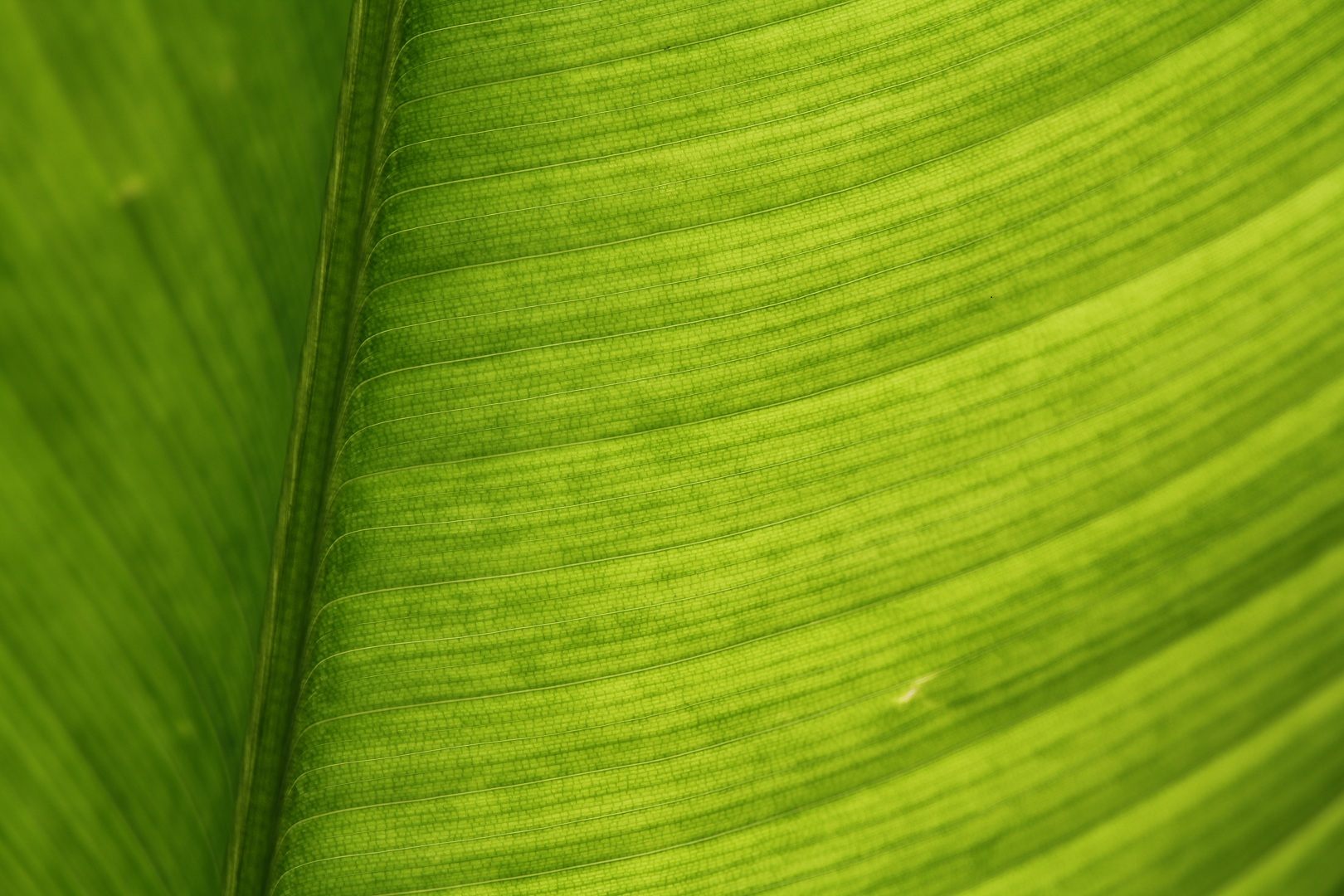
My current studies focus on animal communication. I’m exploring the alarm signals of gray squirrels and the courtship signals of gray wall jumpers, a species of jumping spider. I also once studied the bush hyrax (another gray species) in Kenya. My current work examining the alarm calls and tail gestures of eastern gray squirrels builds on my dissertation research, where I showed that the three vocalizations (kuks, quaas, and moans) and two tail signals (twitches and flags) vary in their specificity. Moans, for example, are highly specific to aerial threats while tail twitches are very broad general alarms. We also showed that by considering both vocal and visual signals, the relationship of signal to threat type becomes much stronger than when considering only vocal or visual alarms separately. The dissertation is freely available here, and some results have been published in the journal Behaviour. Mary Bates nicely summarized those results on her blog, Zoologic, at WIRED Science, complete with some of the sound files we recorded. More publications are listed on my CV page. I am continuing this research by examining the responses of gray squirrels to the various alarm calls given by other gray squirrels to determine whether different calls consistently elicit different anti-predator behaviors or the calls have some other function. The project was also featured by Discovery Channel Canada on the Daily Planet.

My work with jumping spider signaling investigates the various types of signals used by the gray wall jumper during courtship and other conspecific interactions. Much like many songbirds, gray wall jumpers are sexually dimorphic in coloration, with the males having a higher contrast pattern that is less cryptic than the pattern of females. Also like many songbirds, male gray wall jumpers sing and dance to woo a mate. Unlike songbirds, jumping spiders have a very small brain. Looking for similarities and differences in the signaling systems of songbirds and jumping spiders, with their much simpler neural system, will help clarify which explanations of behavioral phenomena observed in songbirds are more broadly applicable and which do not apply to such divergent organisms.

I also carried out a 40-day pilot study in Kenya exploring the effect of interspecific associations on foraging and anti-predator behavior in rock and bush hyraxes. This involved traveling throughout the country investigating potential research sites and observing the behavior of rock and bush hyraxes living in heterospecific groups and rock hyraxes living in monospecific groups. This project was put on hold due to political violence in Kenya. To the left is a rock hyrax peering down from a ledge on a kopje, and at the top of this page is a bush hyrax, a smaller species with more gray in its fur.
So, do I only study gray species?
No! Gray squirrels are usually gray, gray wall jumpers are, yes, gray, bush hyraxes are gray with pale eyebrows and bellies, but rock hyraxes are brownish! And gray squirrels can also be solid black or occasionally white. Even the gray form of gray squirrels have reddish brown in their fur, especially on their sides and legs, and in the winter they have a white patch at the base of each ear. And the gray wall jumper has some white and black markings in addition to gray, as well as a reddish-brown mask, kind of the color of a, well, of a… rock hyrax. Hmm. OK, you got me. Apparently I only study animals that are various shades of gray and/or reddish brown. Maybe I need to start looking at these guys.
So, do I only study gray species?
No! Gray squirrels are usually gray, gray wall jumpers are, yes, gray, bush hyraxes are gray with pale eyebrows and bellies, but rock hyraxes are brownish! And gray squirrels can also be solid black or occasionally white. Even the gray form of gray squirrels have reddish brown in their fur, especially on their sides and legs, and in the winter they have a white patch at the base of each ear. And the gray wall jumper has some white and black markings in addition to gray, as well as a reddish-brown mask, kind of the color of a, well, of a… rock hyrax. Hmm. OK, you got me. Apparently I only study animals that are various shades of gray and/or reddish brown. Maybe I need to start looking at these guys.

